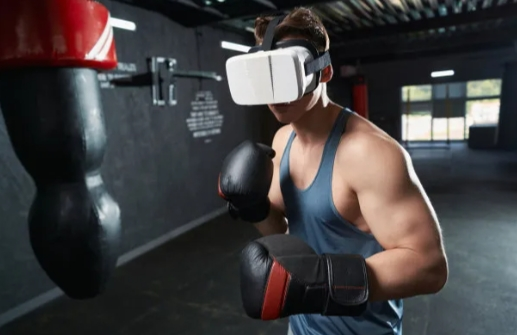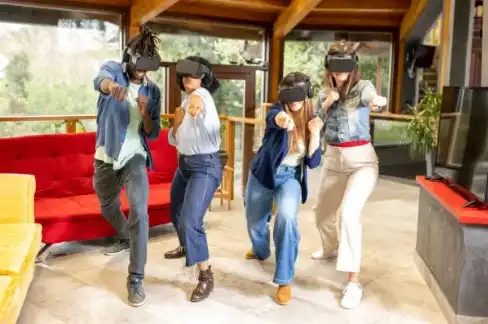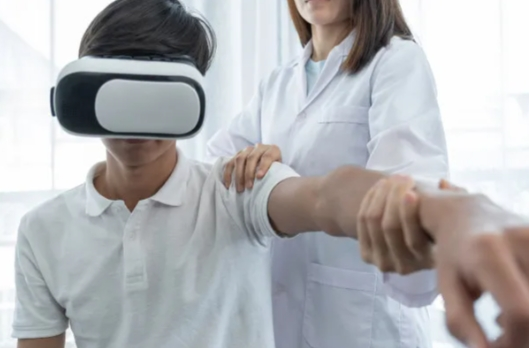Development of Intelligent Flooring in VR Sports
The prospects for intelligent flooring in VR sports are very promising. With the continuous advancement of virtual reality (VR) technology, sensor technology, and intelligent materials, intelligent flooring is expected to play a significant role in VR sports. By integrating with VR technology, intelligent flooring can greatly enhance the user experience, providing more immersive and interactive opportunities for sports training, entertainment, and rehabilitation. The following outlines the potential development prospects and applications of intelligent flooring in VR sports:

1. Core Functions of Intelligent Flooring in VR Sports
The core advantage of intelligent flooring lies in its ability to monitor, sense, and provide feedback on users' movement states in real-time. By embedding sensors, pressure detection systems, and motion capture technology, intelligent flooring can tightly integrate with VR systems, enabling more precise and interactive movement experiences for users. The main functions of intelligent flooring in VR sports include:
(1) Precise Motion Capture
Intelligent flooring equipped with sensors and pressure detection systems can capture users' movement trajectories, steps, jumps, and turns in real-time, transmitting this data to the VR system. This allows the VR system to accurately capture users' foot movements and generate corresponding responses in the virtual environment.
- Application Example: In virtual running, jumping, or football sports, intelligent flooring can provide real-time feedback on users' steps, centers of gravity, and acceleration, ensuring the accuracy and immersion of the virtual sports environment. For example, in a virtual football game, intelligent flooring can sense users' walking, running, or turning actions and synchronize them accurately in the virtual world.
(2) Enhanced Motion Feedback
Intelligent flooring can offer more tactile feedback, providing VR users with a more realistic interactive experience. Through built-in tactile feedback systems, intelligent flooring can simulate step sensations and ground conditions during user movements, increasing immersion and athletic performance.

- Application Example: In VR fitness or dance games, users' foot interactions with the virtual ground can be synchronized through tactile feedback from the intelligent flooring. For instance, in dance games, intelligent flooring can mimic ground elasticity and help users achieve natural feedback sensations during jumps and spins.
(3) Real-Time Data Analysis and Motion Guidance
Intelligent flooring can monitor users' movement data in real-time and analyze it in conjunction with VR systems to provide personalized motion guidance. For instance, the flooring can detect gait, stride length, and step frequency, offering improvement suggestions based on the data to optimize actions and enhance performance.
- Application Example: During virtual running or fitness training, intelligent flooring can detect whether users' gaits are proper or identify risks of injury, providing real-time feedback through the VR system to correct movements.
2. Specific Application Areas of Intelligent Flooring in VR Sports
(1) VR Sports Training
Intelligent flooring has significant application value in VR sports training, especially in improving athletes' training effectiveness and movement precision.
- Strategic Training and Simulation: In sports like basketball and football, which require quick reactions and precise tactical coordination, intelligent flooring can help athletes perform tactical drills and motion analyses in VR environments. Athletes can train within virtual scenarios while receiving real-time feedback from the flooring to adjust and optimize movements, improving their performance.
- Technical Skill Training: In sports such as tennis and badminton, intelligent flooring can help simulate post-shot footwork, center-of-gravity control, and running paths to achieve refined training. By analyzing gait, the flooring can guide athletes on adjusting weight distribution to prevent injury and enhance performance.
(2) VR Fitness
With VR fitness becoming a new way to work out, intelligent flooring will be a crucial tool to enhance the exercise experience and efficiency.
- Interactive Fitness: In VR fitness games or training, intelligent flooring can help users achieve interactions between the virtual and real worlds. For instance, users can train through jumping, turning, and walking, with the flooring providing real-time feedback to ensure the correct execution of movements.
- Fitness Data Monitoring: Intelligent flooring can monitor users' workout performance (e.g., gait, force distribution, calorie consumption) and transmit the data to VR fitness platforms. This helps users track progress and outcomes and receive personalized exercise recommendations based on the data, enhancing fitness results.

(3) Virtual Sports Competitions
Intelligent flooring is not only suitable for personal training but can also extend to virtual sports competitions, enhancing interactivity and immersion.
- Multiplayer Interaction: In virtual sports competitions, multiple users can participate simultaneously and interact with the VR system through intelligent flooring. For instance, in VR football games, users' running, passing, and shooting actions can be captured by the flooring, enhancing interaction and competition among players.
- Competition Feedback and Tactical Guidance: During virtual competitions, intelligent flooring can provide real-time sports data analysis to help participants optimize movements and adjust tactics. For example, in a VR racing game, the flooring can detect users' foot actions and body posture to simulate every detail of virtual driving.
(4) Rehabilitation Training and Therapy

Intelligent flooring has great potential in virtual rehabilitation training, particularly in treating stroke, spinal cord injuries, and motor impairments. It can offer more personalized and interactive rehabilitation solutions.
- Virtual Rehabilitation: By integrating with VR technology, intelligent flooring can provide a virtual rehabilitation environment. Patients can perform gait, balance, and other training via motion feedback from the flooring, while the system adjusts the difficulty level based on the recovery progress and provides real-time guidance through data analysis.
- Motion Evaluation and Recovery Progress: By monitoring patients' movement data (e.g., gait, strength, coordination), intelligent flooring combined with VR systems can allow therapists to better evaluate recovery conditions and make personalized treatment adjustments.
(5) Enhanced Sports Entertainment Experience
Intelligent flooring elevates the entertainment aspect of VR sports, offering more diversified interactive experiences.
- Virtual Sports Games: Users can engage in various sports activities, such as soccer, basketball, and boxing, in a virtual setting. Intelligent flooring can capture every step, jump, and turn, enhancing the athletic feel and interaction within virtual games.
- Immersive Experience: While playing VR sports games, users can deeply immerse themselves in the virtual world through tactile feedback and motion capture provided by intelligent flooring, enjoying an enhanced sense of realism in their movements.
3. Challenges and Prospects
Despite the promising prospects for intelligent flooring in VR sports, several technical challenges remain:
- Cost Issues: The current manufacturing and installation costs of intelligent flooring are relatively high, which may limit its adoption in ordinary households and small venues.
- Technical Difficulties: Achieving precise motion capture and feedback, low latency, and high-accuracy sensor technology are core challenges in intelligent flooring development. The flooring must quickly respond to users' movements and provide smooth experiences.
- Integration and Compatibility: Intelligent flooring needs to seamlessly integrate with VR hardware and software, ensuring compatibility and effective interaction among diverse devices—this is another challenge for widespread application.
However, with technological advancements, reduced manufacturing costs, and growing consumer demand for immersive experiences, the application of intelligent flooring in VR sports is expected to gradually expand. Particularly in sports training, fitness entertainment, virtual competitions, and rehabilitation therapy, it is poised to deliver more immersive and personalized experiences.
By combining intelligent flooring with VR sports technologies, the future holds vast potential. Intelligent flooring not only provides athletes with precise training feedback but also brings everyday users more immersive and interactive fitness and entertainment experiences. As technology continues to progress, intelligent flooring will play an increasingly important role in virtual reality sports, delivering more efficient, safer, and enjoyable workout experiences.





